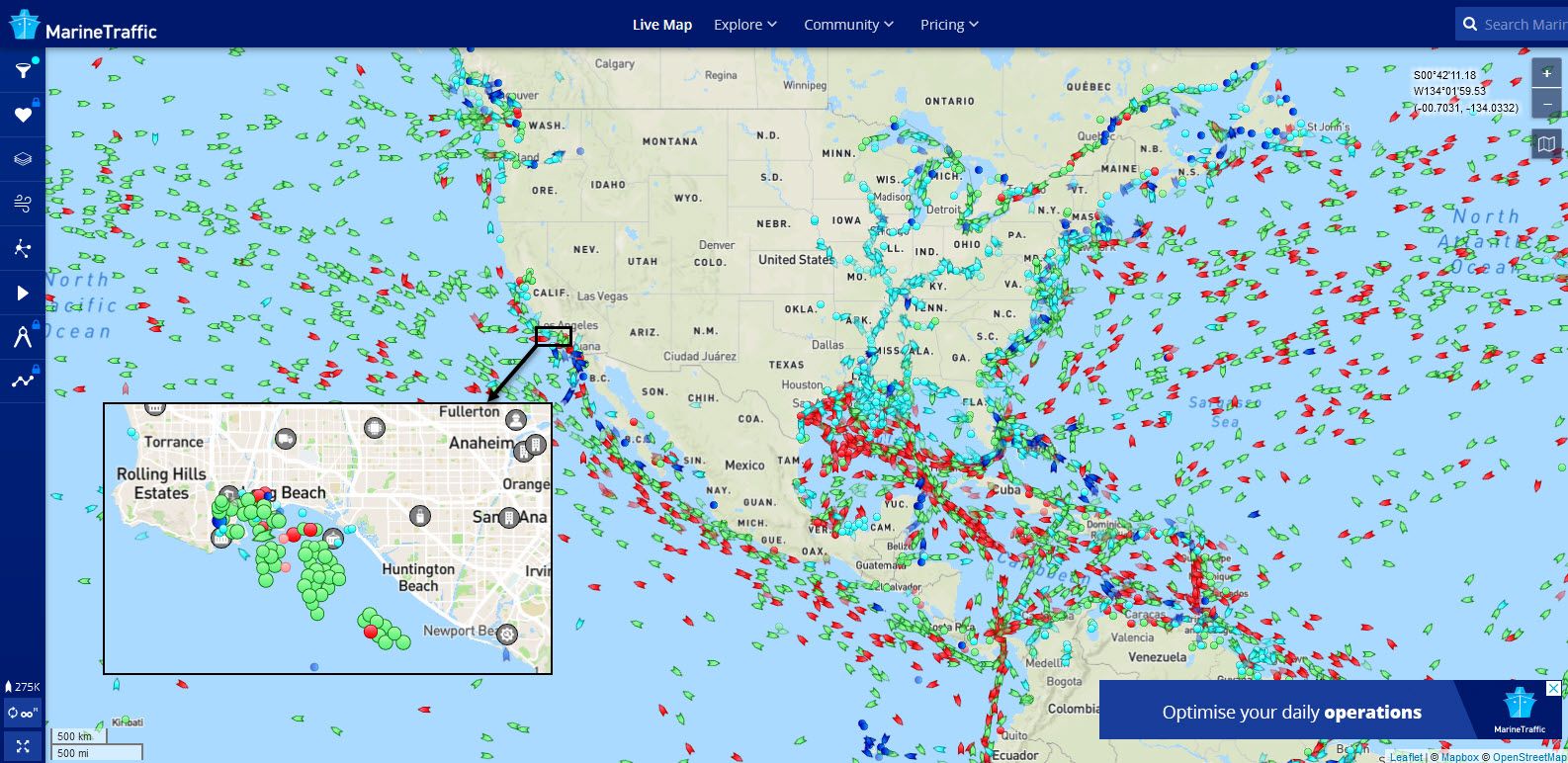An image of a map taken from what appears to be a maritime traffic tracking website has been widely shared online as evidence of gridlocked container ships awaiting an open port. There is a backlog of cargo ships at some major U.S. ports — but that’s not what this map shows. Let’s take a look at the facts.


NewsLit takeaway
Screenshots of articles or graphics are commonly used out of context as false evidence on social media. In this case, not only did the person posting this fail to provide information about its origin, the poster also included conspiratorial language (“Welcome to the next Trojan horse”). Such details are red flags. A quick search for key words included in this viral claim (e.g. “sitting ships”) is an efficient way to find fact-checks and links to credible, standards-based news reports about the container ship bottleneck. Another helpful strategy is to click on the user’s account and examine other posts to gauge their credibility. In this case, the user has a history of posting conspiracy theories and other fringe content – yet another reason to view this post with skepticism.
“Image of map doesn’t show hundreds of ‘sitting’ ships waiting to dock at US ports” (Samantha Putterman, PolitiFact).
NLP’s viral rumor rundown is a regular feature in The Sift, its weekly email newsletter for educators, and in Get Smart About News, its weekly email newsletter for the general public. You can subscribe to these newsletters here. Send suggestions, questions or feedback on this rumor or on the viral rumor rundown blog to thesift@newslit.org.

